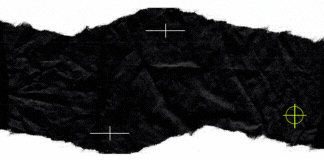Qual era a cor do céu antigamente?
Summary of the Article – How the Sky Looked like in the Past
1. According to Pythagoras (572-497 BC), the sky was believed to be spherical, with different celestial bodies such as the planets, the Sun, and the Moon being carried by separate spheres from the ones carrying the stars.
2. The reason why the sky appears dark at night is that if Earth didn’t have an atmosphere, even during the day with the Sun shining, the sky would still appear dark like it does at night.
3. The color of the sky during the night varies depending on the time. During the day, the sky appears blue; in the late afternoon, it takes on reddish tones; and at night, it appears black.
4. Venus becomes visible in the western direction, very close to the horizon, early in the night. Its bright and bluish-white color makes it easily recognizable. Mars can also be seen in the early evening, towards the northwest. Saturn can be located in the northern direction, around 7-9 pm.
5. In the past, people used the Sun, the Moon, and the stars to navigate and orient themselves. This type of orientation was common among travelers, fishermen, and sailors, who usually knew the general characteristics of the night sky.
6. The sky is blue because sunlight, when passing through Earth’s atmosphere, gets refracted and reaches the atoms of oxygen and nitrogen, which then scatter it in all its colors with their respective wavelengths reflected by these particles. Blue is the color that scatters and reflects the best.
7. The color of the sky is blue. The sky appears blue due to the phenomenon of dispersion that occurs when light rays infiltrate Earth’s atmosphere. The sky can have various colors, from blue to red.
8. The reason behind the reddish sky has to do with the refraction of the sun’s colors. However, this phenomenon only occurs during certain times of the year, particularly during autumn, when the Earth starts tilting away from the sun and moving closer to winter, favoring the waves of red and orange light.
9. The true color of the sky is primarily blue, mainly due to the phenomenon of dispersion of light rays as they enter the Earth’s atmosphere. However, the sky can appear in various colors, ranging from blue to red.
10. We see the sky as blue because blue light is able to penetrate deeper and scatter enough within the water column to be reflected back into our eyes, resulting in the perception of a blue sea.
Questions:
1. What did Pythagoras believe about the shape of the sky?
Pythagoras believed that the sky was spherical and that celestial bodies like the planets, Sun, and Moon were carried by separate spheres from the ones carrying the stars.
2. Why does the sky appear dark at night?
The sky appears dark at night because, even with the Sun shining during the day, if Earth didn’t have an atmosphere, the sky would still appear dark.
3. What color does the sky have during the night?
The color of the sky during the night is black.
4. Which planet is visible in the night sky today?
Venus becomes visible in the western direction, very close to the horizon, early in the night. Mars can also be seen in the early evening, towards the northwest. Saturn can be located in the northern direction, around 7-9 pm.
5. How did people in the past observe the sky?
People in the past used the Sun, the Moon, and the stars to navigate and orient themselves, especially travelers, fishermen, and sailors who were familiar with the general characteristics of the night sky.
6. Why is the sky blue?
The sky appears blue because sunlight, when passing through Earth’s atmosphere, gets refracted and reaches the atoms of oxygen and nitrogen, which scatter it in all its colors. Blue is the color that scatters and reflects the best.
7. What is the color of the sky?
The color of the sky is blue.
8. Why does the sky turn red?
The sky appears red due to the refraction of the sun’s colors. This phenomenon occurs during autumn when the Earth starts tilting away from the sun, favoring the waves of red and orange light.
9. What is the true color of the sky?
The true color of the sky is primarily blue, but it can vary from blue to red.
10. Why do we see the sky as blue?
We see the sky as blue because blue light penetrates deeper and scatters enough within the water column to be reflected back into our eyes, creating the perception of a blue sea.
11. Is it possible to see Mars from Earth?
Yes, it is possible to see Mars from Earth. With the naked eye, we can see five planets in the Solar System: Mercury, Venus, Mars, Jupiter, and Saturn.

Como era o céu antigamente
572 – 497 a.C.) acreditava na esfericidade da Terra, da Lua e de outros corpos celestes. Achava que os planetas, o Sol, e a Lua eram transportados por esferas separadas da que carregava as estrelas. Foi o primeiro a chamar o céu de cosmos.
Por que o céu é escuro à noite
Se o nosso planeta não tivesse atmosfera, mesmo durante o dia, com o Sol na nossa frente mandando a luz, veríamos o céu escuro como a noite, independentemente se a superfície terrestre estivesse sendo iluminada!
Qual é a cor do céu durante a noite
Olhando da superfície da Terra, o céu assume cores diferentes dependendo da hora. Se for dia, exibe uma cor azul; se estiver no finalzinho da tarde, ganha tons avermelhados; se for noite, fica preto.
Que planeta está no céu hoje
Vênus começa a se tornar visível na direção oeste, muito próximo ao horizonte, logo no início da noite. Seu grande brilho e sua cor branco-azulada são inconfundíveis. Marte também continua sendo visível no início da noite, na direção noroeste. Saturno poderá ser localizado na direção norte, por volta das 19-21h.
Como o povo observavam o céu antigamente
Os viajantes usavam o Sol, a Lua e as estrelas para se orientar. Esse tipo de orientação é comum entre pessoas do campo, pescadores e navegadores, que geralmente conhecem as características gerais do céu durante a noite.
Por que o céu é azul
O céu é azul porque a luz solar, ao atravessar a atmosfera terrestre, é refratada e atinge os átomos dos gases oxigênio e nitrogênio, que a dispersa em todas as suas cores, com seus respectivos comprimentos de onda, refletidos por essas partículas. A cor que se dispersa e é mais bem refletida é a azul.
Qual é a cor do céu
azul
O céu é azul porque a luz solar, ao atravessar a atmosfera terrestre, é refratada e atinge os átomos dos gases oxigênio e nitrogênio, que a dispersa em todas as suas cores, com seus respectivos comprimentos de onda, refletidos por essas partículas. A cor que se dispersa e é mais bem refletida é a azul.
Por que o céu ficou vermelho
O motivo do céu avermelhado, segundo ele, tem a ver com a refração das cores do sol. Mas por que isto não ocorre em outras épocas do ano O motivo são as estações. Como no outono a Terra começa a se inclinar com mais distância do sol e se aproximar do inverno, isto favorece as ondas de luzes vermelhas e laranjas.
Qual e a verdadeira cor do céu
O céu é azul principalmente devido ao fenômeno da dispersão sofrido pelos raios luminosos ao se infiltrarem na atmosfera terrestre. O céu pode apresentar diversas colorações, desde a azul até a vermelha.
Por que a gente enxerga o céu azul
Como a luz azul penetra mais fundo, ela consegue se espalhar o suficiente pela coluna d'água para ser refletida de volta para nossos olhos, e enxergamos o mar azul.
É possível ver Marte da Terra
Podemos ver cinco planetas do Sistema Solar a olho nu: Mercúrio, Vênus, Marte, Júpiter e Saturno.
Qual é o planeta mais brilhante visto da Terra
Vênus
O mais brilhante dos planetas, Vênus excepcionalmente pode ser avistado durante o dia. Sua cor é branco-azulada e seu brilho aparente só é superado pelo Sol e pela Lua.
Como os indígenas observavam o céu
Os tupi-guarani também observavam os movimentos aparentes do Sol para determinar o meio-dia solar, os solstícios, os equinócios e os pontos cardeais. Para isso utilizavam um instrumento chamado gnômon (Kuaray Ra'anga em guarani e Cuaracy Raangaba em tupi antigo).
Como os egípcios observavam o céu antigamente
Os egípcios voltavam o estudo da Astronomia para a praticidade com o intuito de predizerem os fatos de importância para eles como, por exemplo, as enchentes do Rio Nilo, bem como para a construção das Pirâmides, orientadas tanto para os pontos cardeais como para as constelações, principalmente de Órion (HORVATH, 2008; …
Qual é a verdadeira cor do céu
Conclusão: o céu é azul graças ao Sol e à atmosfera
O céu é azul porque a luz solar é difratada pela atmosfera, onde a faixa do espectro eletromagnético de cor azul, de menor comprimento de onda, se dispersa nas partículas dos gases que a compõem.
Por que o céu é branco
Quando o céu está com cerração, névoa ou poluição existem partículas de tamanhos maiores que dispersam igualmente todos os comprimentos de onda da luz, por isso, o céu fica com uma cor mais branca, devido à associação das cores.
O que aconteceu no céu da China
O céu vermelho foi causado pela refração da luz dos barcos de pesca que ficam na região. Conforme especialistas, em determinadas condições climáticas, quando há mais água na atmosfera, ocorre a formação de aerossóis que refratam e dispersam a luz das embarcações.
Por que a água do mar e azul
Isso acontece porque existe mais matéria orgânica amarelada, como algas e sedimentos que interferem na reflexão da luz e quando se misturam com o verde forma a cor azul.
Qual é o planeta mais fácil de ver
Marte
Por fim, o de mais fácil distinção, Marte: ele tem uma cor vermelha alaranjada bem característica.
É possível ver Júpiter no céu
Júpiter é especialmente visível devido ao seu tamanho — é o maior planeta do nosso sistema solar.
O que os povos antigos observavam o céu
Como os povos antigos observavam o universo
"É muito interessante que civilizações antigas tenham construído monumentos em pedras ou também aproveitado de escavações que retiram o raio do Sol e delimitam o caminho do Sol, para quando mudasse as estações, houvesse uma celebração a entrada do astro.
Como os hebreus observavam o céu
Os viajantes usavam o Sol, a Lua e as estrelas para se orientar. Esse tipo de orientação é comum entre pessoas do campo, pescadores e navegadores, que geralmente conhecem as características gerais do céu durante a noite.
Qual era a cor da pele dos egípcios
Porém, de acordo com Julio Gralha, na iconografia, os egípcios se representam na cor marrom — enquanto os núbios estão na cor negra e os líbios e asiáticos, em tom de amarelo.
Por que o céu do Japão ficou vermelho
O céu vermelho foi causado pela refração da luz dos barcos de pesca que ficam na região. Conforme especialistas, em determinadas condições climáticas, quando há mais água na atmosfera, ocorre a formação de aerossóis que refratam e dispersam a luz das embarcações.
É verdade que a China fez um sol
O tokamak supercondutor experimental avançado (EAST), apelidado de “sol artificial” chinês, alcançou uma operação de plasma de alto confinamento em estado estável por 403 segundos, dando um passo crucial rumo ao desenvolvimento de um reator de fusão.
